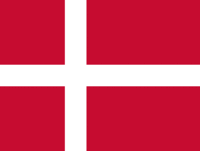Categories Online-Shop World Coins Europe Danmark
Danmark

The Viking Age (800-1050) makes the inhabitants of Denmark in Europe and beyond known: the so-called Varangians operated raids and trade expeditions far into today's Russia and shape the image of the people of this time until today. From the 10th century began the Christianization of Denmark.
After a turbulent phase, the Danish queen Margaret I founded the so-called Kalmar Union in 1397. This alliance brought together all three Scandinavian empires (Denmark, Sweden and Norway) under the same ruler. The Union remained in existence until 1523 and was ended by an uprising under the leadership of the future King of Sweden Gustav Vasa (1521-1560).
The 16th and 17th centuries were mainly determined by conflicts with Sweden. In 1700, the tensions in the Baltic region in the Great Northern War are discharged: Denmark allies with Russia and Saxony-Poland against Sweden's hegemonic aspirations. After 21 years of war and confusion, the war with Russia ends as a new major power in the Baltic States. After all this, Denmark receives the Schleswiger part of the duchy Gottorp and a compensation of 600,000 Reichstalern by the peace of Frederiksborg.
In the course of the 18th century The rulers of Denmark were forced to fundamentally modernize the country. In the Napoleonic wars of the 19th century the Danes are on the side of France. Then it comes in 1813 to national bankruptcy. Soon after, the National Movement begins and in 1848, the constitution still in force is established.
The oldest coins in Denmark - witten, pennies and shillings - date back to the late 14th century. The shilling and its multiples remain the typical currency of the country for many years and are supplemented by the mark in the 16th century. Also ducats and thalers were struck by the Danish kings. In 1873 Denmark and Sweden joined forces to form the Scandinavian Monetary Union (in 1877 joins Norway); the crown becomes the common currency.


